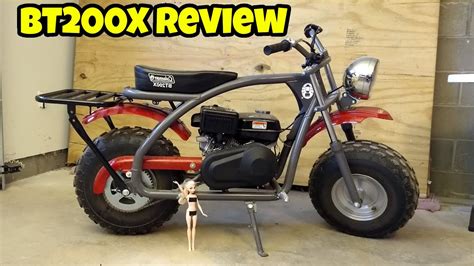Upgrade Your Mini Bike: The Street Legal Edition
Mini bikes offer a thrilling ride, but their off-road limitations can be frustrating. This guide details how to transform your mini bike into a street-legal marvel, allowing you to experience the fun on paved roads while adhering to local regulations. We’ll cover essential modifications, safety considerations, and the legal aspects to ensure a safe and compliant ride.
Is it Even Possible to Make a Mini Bike Street Legal?
The feasibility of making a mini bike street legal depends entirely on your location and the specific regulations in your area. Many jurisdictions have strict rules regarding vehicle size, lighting, braking systems, and other safety features. Before you begin any modifications, thoroughly research your local Department of Motor Vehicles (DMV) or equivalent agency's requirements. Some areas may outright prohibit the registration of mini bikes, while others might have specific guidelines to follow.
Key Modifications for Street Legality
Transforming your mini bike into a street-legal vehicle necessitates several key modifications. These can range from straightforward additions to more complex upgrades, depending on your bike's current state and your local regulations.
1. Lighting System: Headlights, Taillights, and Turn Signals
Adequate lighting is crucial for safe street riding. You'll likely need:
- Headlight: A bright, functional headlight is essential for visibility at night.
- Taillight: A red taillight, often integrated with a brake light, warns other drivers of your presence.
- Turn Signals: Front and rear turn signals are vital for indicating your intentions to turn.
These lights should meet minimum brightness and visibility standards as defined by your local regulations. Improperly installed or insufficient lighting can lead to accidents and legal trouble.
2. Braking System: Reliable Stops are Non-Negotiable
A dependable braking system is paramount for safety. Most mini bikes have minimal or inadequate brakes for street use. You’ll likely need to upgrade to:
- Front and Rear Brakes: Ensure both wheels have reliable brakes, ideally disc brakes for optimal stopping power.
- Brake Lights: These must be integrated with your braking system to signal to other vehicles that you are braking.
It's strongly recommended to have a professional mechanic assess your braking system after installation to ensure it meets safety standards.
3. Mirrors: See What's Behind You
Proper mirrors are vital for safe navigation in traffic. You'll need:
- Left and Right Mirrors: These should provide a clear view of the traffic behind you.
Choose mirrors that provide a wide enough view and are securely mounted to avoid vibrations or accidental dislodgement.
4. Horn: Make Your Presence Known
A functional horn is essential for alerting pedestrians and other drivers.
Ensure your horn meets decibel requirements stipulated by your local laws.
5. Speedometer: Keep Track of Your Speed
While not always mandatory, a speedometer helps you maintain safe speeds and avoid exceeding limits.
Accurate speed readings ensure responsible road use and adherence to speed restrictions.
6. Registration and Insurance: The Legal Side
Once you’ve completed the necessary modifications, you'll need to:
- Register your Mini Bike: This usually involves providing proof of modifications, insurance, and potentially passing an inspection.
- Obtain Insurance: Comprehensive insurance is essential to cover any potential accidents or damages.
Frequently Asked Questions (PAA)
This section addresses common questions regarding street-legal mini bike modifications:
How much does it cost to make a mini bike street legal?
The cost varies significantly depending on the modifications needed, the parts you choose, and whether you do the work yourself or hire a mechanic. Expect to spend anywhere from a few hundred dollars to several thousand, depending on the complexity of the modifications and your local requirements.
Can I ride a mini bike on the road without a license?
This depends on your local laws. Many jurisdictions treat mini bikes as motorized vehicles, requiring a driver's license and potentially specific endorsements. Check your local DMV regulations to confirm licensing requirements.
What are the legal speed limits for mini bikes on the road?
Speed limits for mini bikes are typically the same as those for other motorized vehicles on the same roads. Again, consult your local laws for specific speed restrictions.
What happens if I get caught riding a non-street legal mini bike?
Penalties vary by jurisdiction and can range from fines to impoundment of the vehicle. Always ensure you comply with your local regulations to avoid legal repercussions.
Safety First: Beyond Legality
Even with all the necessary modifications, safety should always be your top priority. Wear a helmet, protective gear (gloves, jacket), and always ride defensively. Be aware of your surroundings, anticipate potential hazards, and ride responsibly.
Remember, responsible ownership and adherence to local laws are paramount. By following these guidelines and prioritizing safety, you can enjoy the thrill of riding your mini bike legally and safely on the streets. Consult your local DMV for precise legal requirements before embarking on any modifications.

